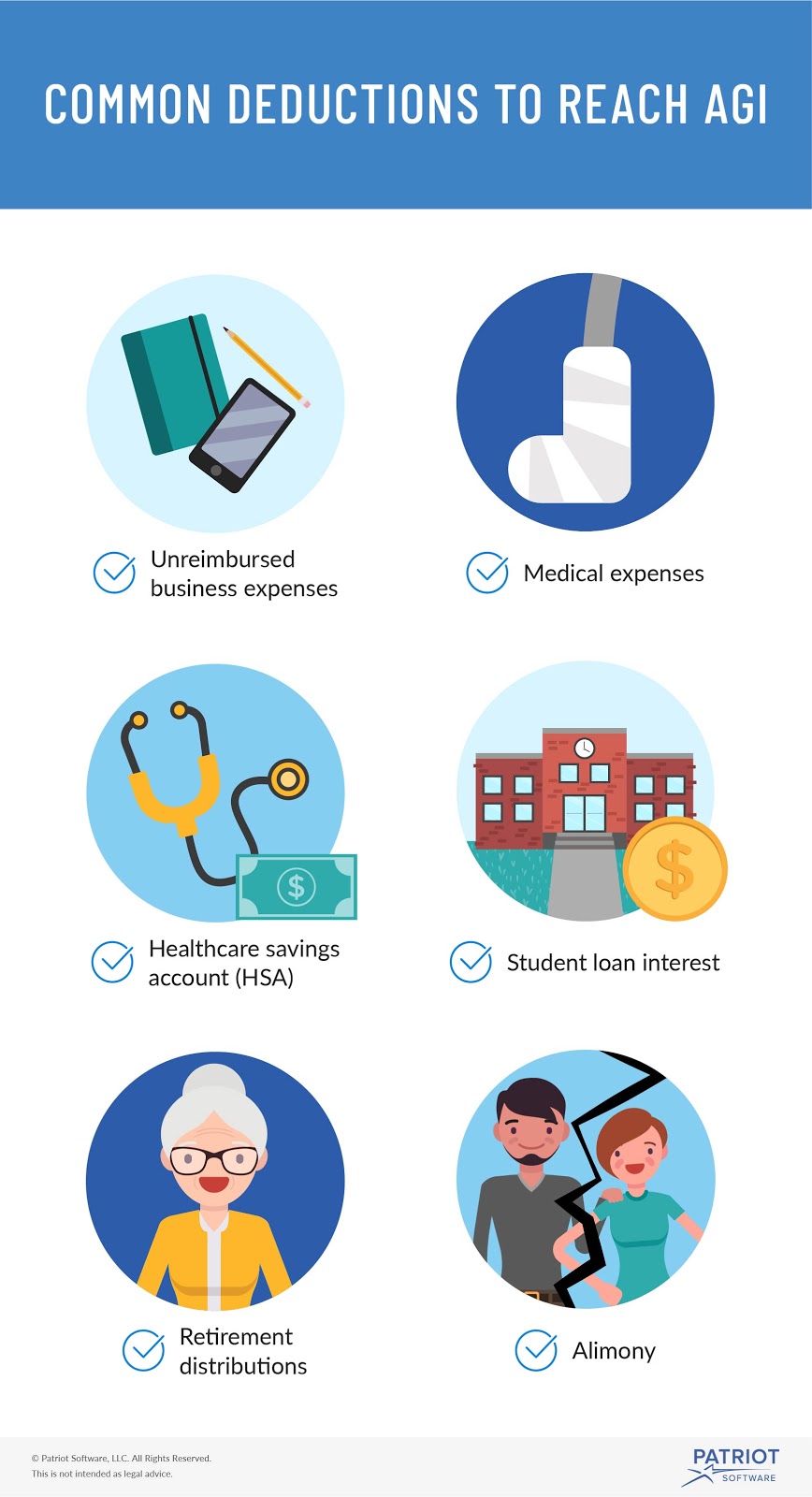As a small business owner, you have likely heard of the terms gross or net income. But, are you familiar with adjusted gross income? Learn what is adjusted gross income, how to calculate it, and uses for adjusted gross income below.
What does adjusted gross income mean?
Adjusted gross income, or AGI, is a person’s total gross income minus specific deductions or payments made throughout the year. Your adjusted gross income is the amount of money you receive each month that is subject to taxes. AGI is only used on individual tax returns.
Although AGI is typically referred to as net income, they are not exactly the same. Whereas net income refers to after tax income, AGI is total taxable income.
Gross income vs. adjusted gross income
Although gross income and adjusted gross income may sound similar, they are very different. So, what is gross income?
Gross income refers to the salary or hourly wages set by an employer before deductions. Annual gross income is the money earned during the year before subtracting deductions.
Unlike gross income, adjusted gross income is the total taxable income after deductions and other adjustments. Adjustments to gross income are specific expenses the IRS determines.
AGI deductions and credits
Typically, employers are required to deduct federal taxes from an individual’s paycheck, including Social Security and Medicare taxes. Depending on the state, employers may need to deduct state and local taxes, too. However, federal, state, and local taxes don’t affect AGI.
Along with payroll taxes, other optional deductions may come out of an individual’s paycheck. Before you calculate AGI, you must deduct other deductions like health, life, dental, and vision insurance.
Other deductions and payments will also affect adjusted gross income. The deductions taken from gross income to calculate AGI are referred to as adjustments to income.

Calculating adjusted gross income
Now that you know what adjusted gross income is, you are probably wondering, How is adjusted gross income calculated?
Calculate AGI by first determining the total gross income. Gross income is the total of all the money earned during the calendar year, including annual wages, interest, and tips.
After you compute total gross income, deduct items such as IRA contributions or student loan interest to calculate AGI.
Example of calculating AGI
Say you earned $50,000 in wages and tips during the year. Your total taxable IRA distributions are $1,000. You also have $500 in moving expenses, $2,000 in student loan interest, and $300 in IRA contributions.
First, calculate gross income by adding together wages, tips, and taxable distributions.
Gross income = $50,000 + $1,000
Gross income = $51,000
Next, deduct the other payments, contributions, and expenses from gross income to calculate AGI.
AGI = $51,000 – $500 – $2,000 – $300
AGI= $48,200
Your AGI is $48,200.
Uses for adjusted gross income
AGI influences an individual’s tax bracket. And, it can determine if a person is eligible to claim additional deductions and credits when filing tax returns.
You may need to report AGI when applying for a loan or submitting paperwork to lenders. Lenders usually look at adjusted gross monthly income to see how much income a person has available to pay bills and purchase necessary items.
Gross income might make it seem like an applicant can afford a loan, while AGI shows a clearer picture of what an individual can afford.
Filing taxes using adjusted gross income
You report adjusted gross income on Form 1040, U.S. Individual Income Tax Return. Form 1040 is the only form that allows you to deduct every adjustment.
Taxpayers who don’t file Form 1040 will not have access to the full extent of credits and deductions that lower AGI.
Adjustments may lower any amount a person owes to the IRS at the end of the year, or make them eligible for a tax refund.
Need an easy way to keep updated and accurate books? Patriot’s online accounting software allows you to record and organize transactions. Try it for free today!
This article has been updated from its original publication date of 1/21/2015.
This is not intended as legal advice; for more information, please click here.
